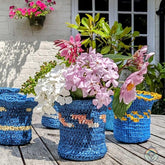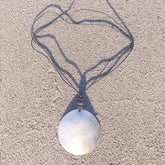Why a Circular Economy
Recently in the news there has been chatter about a circular versus a linear economy. What is the difference? Which is better? How do we go about supporting such things?
The short answer is: if we as individuals, societies, as the global community want a cleaner, greener future we need to change from a linear economy to a circular economy.
While some change at a political and cultural level is underway, currently our society is one of fast manufacture of new produced from new raw materials; fast consumption, buying, using and dumping as quickly as budgets allow. The concept is at the root of traditional capitalism and is the linear economic model.
It has served us well in terms of technological advances and making our society increasingly safe and prosperous. Despite what headlines tell us our streets have never been safer. Most of us do not feel the need to walk around armed. Lest we forget Victorian Britons had no such luxury.
The problem we now recognise is that the linear economy model, with its constant production, the driving of need or want, the short term one-time use, and then disposal. This creates a large amount of waste in numbers too big to actually fathom. I will tell you anyway: 2.01 billion tonnes. It is difficult to even imagine one ton of waste never mind 2,010,000,000 tons.
All of it is put into the ground, on top of the ground, into our oceans and rivers, or burned throwing toxins into the air we breathe and the food we eat.

We are now in the midst of the largest global pollution problem our planet has ever faced.
What exactly is a ‘LINEAR ECONOMY’?
A linear economy is the name given to the simple process of producing an item, using it once and then throwing it away. It is sometimes possible that the item can be re-used or parts of it can be recycled to make a different single-use item and increasingly we see made from or partially made from recycled plastic or glass. Mainly, however, the products are thrown into landfill or incinerated at the end of their life.
In the UK, we generally have a linear economy. In other words, we are a high consumer society with fast-paced capitalist production with a significant amount of waste produced.
How would shifting towards a ‘CIRCULAR ECONOMY’ help?
In this model, sustainable and natural materials are used to produce, reuse, recycle and renew, minimising the need to add raw materials into the system of production.
Natural and sustainable products can be used repeatedly until they eventually biodegrade and become part of the Earth, leaving no lasting scar on the planet.
In the circular economy producers reuse the products that we already have to make new ones, instead of throwing away old items and buying new.
Our finite raw materials would be in a continuous cycle of use and reuse, which is the aim of the circular economy.
What about our appliances and electronics?
The “Right to Repair” movement has recently been in the news with politicians promising legislation and high-profile figures such as Steve Wozniak, co-founder of Apple along with Steve Jobs, jumping into the fray. The aim is to repair and maintain products for as long as possible while introducing the minimal raw materials needed to repair and restore them. In addition, built-in obsolescence would be discouraged by consumer purchasing choices and possibly legislation.
In this scenario if your product breaks, and in particular a minor break or faulty part and needs repairing, it would be relatively simple to buy the replacement part and fix it yourself or have someone to fix it for you at relatively low cost. Alternatively you can upgrade but your old appliance could easily be sold on because no expert knowledge nor access would be required to replace a component.
Back in the day, we used to be pretty good at this. There were repair shops on every street corner where it was cheaper and made more sense to have everything from shoes to clothing to cars to TVs fixed and returned almost as good as new.
Sometimes I wonder why did we ever stop fixing things? We can save money and reduce pollution by repairing things, as well as having the option to sell it on for re-use.
Imagine a high street fashion store that offered a repair service? Instead of throwing away your favourite torn clothes you could get a repair done!
You may think this is far-fetched but some countries such as the Netherlands, Slovenia, Belgium and France have all started to break away from the linear model and are fast becoming thriving circular economies of sustainability.
The Indian sub-continent is our model for repair and rebuild. I have seen first- hand some incredible items rebuilt and renewed from old. I have also seen broken wheelchairs and other special needs equipment sent to Zambia, converted into purposeful products. There is no reason we in the UK can’t do the same. We are improving but there is much more to be done. Statistics indicate that most of us want to be a part of the global movement towards sustainability, we just are not sure how. Given the choice, 68% of us would pick products with ethical and sustainable credentials.
Value the Vintage
Currently in the UK, as products wear their value is generally seen to drop. Sadly, many manufacturers have built in obsolescence. When it breaks it breaks for good; worse, minor components are designed to break after a period the manufacturer deems is sufficient, to push you to buy new again. Smart phones are a good example of this concept.
Attitudes are changing towards some products, particularly amongst younger people. Products that still seem trendy to me are now viewed as ‘vintage’. The good news is that vintage is now cool. This value needs to be extended towards a wider range of products.
If the UK were to transition towards a circular economy we could significantly reduce waste and remove the pressure on raw materials.
Fortunately, we do have some responsible manufacturers who are proponents of the circular economy. See here for some examples:
https://www.hurstdoors.co.uk/responsible-manufacturing/
So, can we, as individuals really make a difference?
It may seem like our efforts are insignificant in the grand scale of things but remember many drops make an ocean.
Here are a few things we can do to support the circular economy:
- Focus on buying only what we decide we need, rather than because some slick advertiser told us
- Repair where possible
- Buy second- hand or upcycled furniture and upcycle ourselves where possible (it’s fun by the way)
- Walk, cycle or use public/electric transport. Enjoy the journey as well as the getting there
- Use sustainably made and upcycled products
- Avoid fast fashion unless you plan to slow it down
By doing our individual bits we are contributing to the transition away from a wasteful society and we are joining a growing community of like-minded individuals (68% and growing). Our demand will eventually be persuasive enough to make a difference in supply.
There is power in your purchase.












Leave a comment
All blog comments are checked prior to publishing